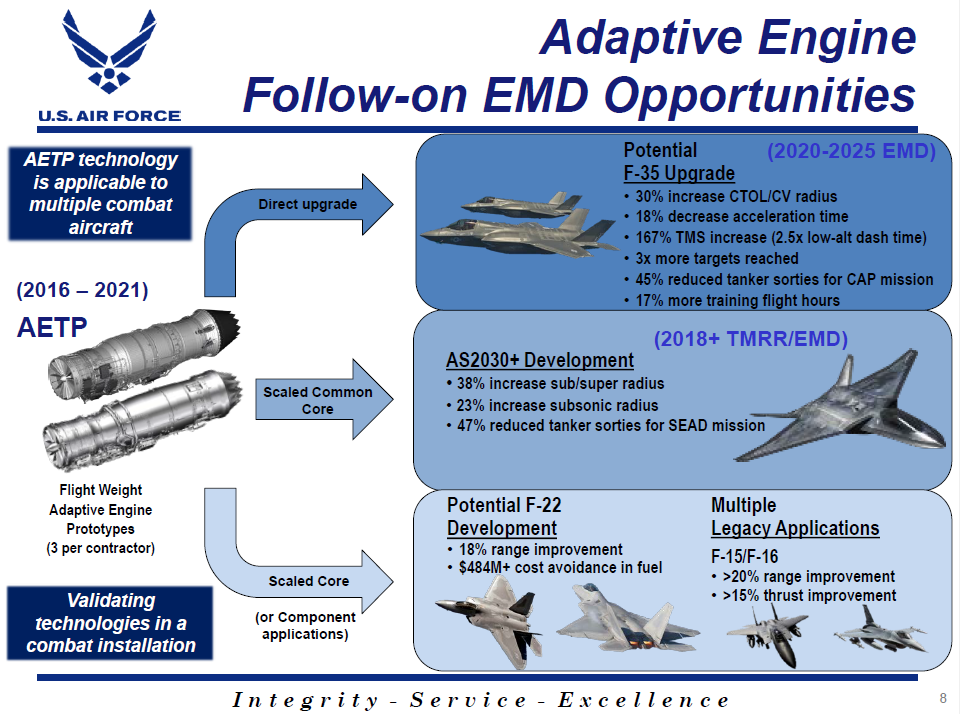US Air Force chief of staff Gen. David Allvin set the cat among the pigeons on Thursday by suggesting that the service might not proceed as expected with its planned next major combat aircraft, the Next Generation Air Dominance program.
This came as a shock, because as secretive as the USAF has been about NGAD, including the testing of at least one demonstrator at the nation’s covert flight test base at Groom Lake in Nevada, it was widely reported that a downselect to a single contractor was due this year. The air vehicle program and its precursors have been under way for nine years and the closely associated variable-cycle Next Generation Adaptive Propulsion (NGAP) engine for longer than that.
This is a big-time Lucy-and-the-football move, and follows the Navy’s removal of $1 billion in money for its new strike fighter, F/A-XX, from the 2025 budget. Northrop Grumman had backed away from NGAD to chase F/A-XX: now, Kevin Mickey, the formidable, Scaled Composites-trained engineer who had been heading that effort, has retired.
Allvin’s words may (just) have been a ploy. Congress keeps reinstating aircraft that the USAF wants to retire, and attempting to restore F-35s that the Air Force would like to defer. Both put pressure on the acquisition accounts that would pay for NGAD. The air force may also want to tighten the pressure on Boeing and Lockheed Martin to produce more attractive bids for the new aircraft.
But there are longer-term issues with NGAD.
Air Force secretary Frank Kendall was the Pentagon’s acquisition boss in 2015 when the Aerospace Innovation Initiative was launched, with the Defense Advanced Research Projects Agency as a front: the Aerospace Projects Office that ran AII was within, but not really of, DARPA. AII ran in parallel with the effort led by Air Combat Command boss Gen. Michael Holmes to define a future combat aircraft.
There was one unwritten, but mandatory requirement from the start: it was not going to be anything to replace or supersede the F-35, because it was an article of faith that the F-35 would be an affordable roaring success. A smaller aircraft made no sense in the China context, so the new project would be a high-end airplane.
The new aircraft became known as Penetrating Counter-Air (PCA). Notably, it was not a classic fighter: it was intended to operate against all counter-air threats, including integrated air defense systems and airborne radars; it was designed to operate in conjunction with standoff weapons, unmanned vehicles, electronic warfare and cyber; and maneuver and close combat would be de-emphasized. It became clear that PCA would be quite large, very expensive and acquired in the low hundreds at most.
Fast-forward to 2022: with the China’s rapid modernization and war in the Ukraine, the exotic PCA starts to look a little late-to-need, costing a lot of money and delivering no capability until the early 2030s. In early 2023, the Air Force Association’s Mitchell Institute starts work on a report (it appears in June) that sounds the alarm.
“The Air Force is the oldest, smallest, and least ready in its entire history… [it] now possesses a fighter inventory that is geriatric and on the brink of inadequacy.” The report, extensively quoting current and recent Air Force leaders, mentions NGAD, but stresses that the force will be too small to be decisive: “This volume would run thin, given high demand across a range of global commitments, growing threats, and vast theaters of operation.”
The Mitchell report has one overriding recommendation. (Mitchell is well-connected and there’s little doubt that the conclusion is shared by industry and by air force seniors.) The recommendation: go all-in on F-35 Block 4, and accelerate production concurrently with development.
Woopsers! The report appears just as it becomes clear that deliveries of the TR-3 configuration, the basis of Block 3, are indefinitely adjourned. The news gets worse over the next 12 months.
The air force is now like a planeload of passengers being repeatedly thanked for your patience ladies and gentlemen because we are just waiting for maintenance personnel to arrive from Milwaukee so they can verify that the right part has been delivered from Houston, we’ll have an update for you in 45 minutes, and we are aware that some of you have tight connections and we are making every effort to accommodate you.
The Air Force can’t walk away from F-35 or even slow it down: it has nothing else. The F-35 omnishambles has a direct impact on NGAD, because the service is going to be paying hefty R&D bills for F-35 through the end of the decade, and procuring costly upgrade hardware as well.

That’s not all. The plan for the NGAP engine and its precursor programs was that a common technology and component base would be used not only to power the new Air Force and Navy aircraft but to re-engine the F-35, addressing its thermal-management issues and improving both range and acceleration. See slide from 2019.
But then it was discovered that the new engine doesn’t fit the Marines’ F-35B. RTX lobbied successfully for an upgraded F135 for all versions of the aircraft. Next, F/A-XX was removed from the budget. Result: the air force NGAD is carrying on its own a large, risky engine development effort – with a 400-engine production run. That’s enough to make a project look much less attractive.
Finally, there was Northrop Grumman’s decision to walk away from NGAD, which left the Air Force with a choice.
On one side, a Lockheed Martin monopoly – the company now failing to deliver any aircraft at all, without a current plan to get to the configuration the air force believes it needs, and questionably motivated to execute NGAD if that’s going to put stress on the existentially important F-35, on which it’s exposed far more than any company should be.
On the other side, Boeing, which has managed to make an epic pig’s ear of what should have been three pretty straightforward acquisitions (tanker, trainer and VC-25B) by underbidding and underperforming.
Quite the choice. As the punchline to the old joke puts it: “Death – or Bongo.”
In short, it’s entirely possible that there is no bluffing at all; and that the nation’s post-F-35 combat aircraft plans have failed.
But the next question is whether defense contractors care too much, as long as they have share in current programs. They’re out some bid-and-proposal money, but NGAD, AII and NGAP were DoD-supported. As I argue here and in my book, innovation is no longer good for business. And that’s a bigger problem than one program.
Our flight attendants will be passing through the cabin with a water service. Once again thank you for your patience and for flying LockMart.

